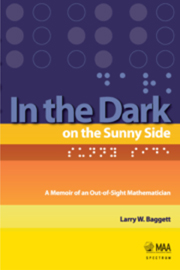Book contents
- Frontmatter
- Contents
- To Christy, my light
- Prologue
- 1 Uncle Al's Truss
- 2 A Quantum Moment
- 3 Louis and the Problem of Sixty-Three
- 4 A Cane Mutiny
- 5 Pinocchio Becomes a Real Boy
- 6 Aunt Mildred and the Circle of Fifths
- 7 Scarlet Ribbons
- 8 Dauntless Courage
- 9 The Age of Enlightenment
- 10 Baggett v. Bullitt, and All That Jazz
- 11 Publish or Perish, My Best Work
- 12 The Renaissance
- 13 “So How'd That All Work Out for You?”
- Author's Notes
- Acknowledgments
- Index
13 - “So How'd That All Work Out for You?”
from To Christy, my light
- Frontmatter
- Contents
- To Christy, my light
- Prologue
- 1 Uncle Al's Truss
- 2 A Quantum Moment
- 3 Louis and the Problem of Sixty-Three
- 4 A Cane Mutiny
- 5 Pinocchio Becomes a Real Boy
- 6 Aunt Mildred and the Circle of Fifths
- 7 Scarlet Ribbons
- 8 Dauntless Courage
- 9 The Age of Enlightenment
- 10 Baggett v. Bullitt, and All That Jazz
- 11 Publish or Perish, My Best Work
- 12 The Renaissance
- 13 “So How'd That All Work Out for You?”
- Author's Notes
- Acknowledgments
- Index
Summary
I think it was in the 1980s that I began to experience the fruits of all my labors, and I truly felt on top of my game. My second marriage was going wonderfully, our children were all perfect—especially in our eyes—and I was finding success in my profession, attending conferences, presenting papers, getting financial support for my research, publishing journal articles and books, receiving high teaching evaluations from my students, and eventually becoming chair of the mathematics department. Not only that, technology was finally reaching the point where we blind people were acquiring access to more and more specialized equipment designed to integrate us into the general society, the result being that I was thinking of myself as just one of the gang, just as normal, and perhaps in some cases more normal, as any other practicing mathematician.
Of course the fruits of one's labors are most probably results that follow from careful planting and years of fertilizing and tending. So the harvest I noticed in the 1980s no doubt owed its bounty to many years that preceded that decade. Luckily for me, the 1960s and 1970s were golden ages for mathematics research, the Soviet spacecraft Sputnik having awakened the U.S. government to the need for supporting basic research. So there were lots of conferences and workshops being organized by various agencies, and lots of us participated. I myself was a regular attendee at the Annual Joint Meetings of the Mathematical Association of America and the American Mathematical Society each January and regional AMS meetings in spring and fall, as well as a participant in a variety of specialized summer conferences.
- Type
- Chapter
- Information
- In the Dark on the Sunny SideA Memoir of an Out-of-Sight Mathematician, pp. 183 - 198Publisher: Mathematical Association of AmericaPrint publication year: 2012

